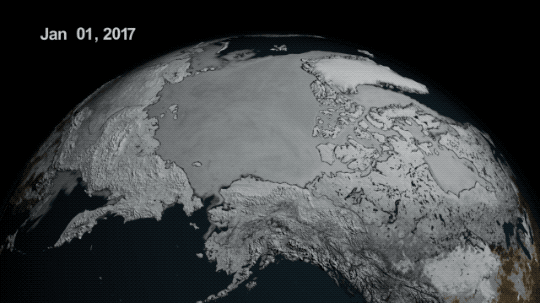Idolater
"Matthew 16:18-19" Dispensationalist (Catholic) χρ
Does liquid (melted) rock (magma or lava) exist solely because of the Flood?
Are there radioactive elements at the earth's surface solely because of the Flood?
And also, as far as climate change goes, do you think the earth's climate pattern changed when it went from its largely green surface, 'pock marked' with large lakes but no seas, to 70% of the surface covered in ocean? I bet it did.
The idea as far as I understand it which is almost nil, is that the crust was a single contiguous object before the Flood, some mixture of higher density rock and lower density rock, all pressing down on a layer of water beneath it (contributing the pressure component needed to make the water "supercritical"). When the Flood occurred, the crust ruptured, and this initial break basically caused a 'chain reaction' where the entire crust collapsed all over the earth, turning all or a lot of it into rubble, and in all the rushing shooting water and all the cracking and disintegrating rock of the crust, things were pretty chaotic as we probably can't imagine, but in all this movement there were friction forces deep down, generating tons of heat between the earth's solid mantle and the crumbling and crumbled crust, which melted a lot of rock into lava or magma, and some quantity of this melted rock still exists under the current crust's arrangement, sometimes emitting as volcanism.
I know even less about radioactivity, so bear with me. Radioactive elements existed before the Flood but only under the earth's crust (or maybe at the bottom of it), and when the crust disintegrated during the Flood and churned all around, some of the previously buried material came to the surface, stayed there, and is still here now. Radium, radon, uranium, etc.
I don't know if the Flood explains radioactive isotopes found in most if not all chemical elements. (Such as carbon 14.)
Are there radioactive elements at the earth's surface solely because of the Flood?
And also, as far as climate change goes, do you think the earth's climate pattern changed when it went from its largely green surface, 'pock marked' with large lakes but no seas, to 70% of the surface covered in ocean? I bet it did.
The idea as far as I understand it which is almost nil, is that the crust was a single contiguous object before the Flood, some mixture of higher density rock and lower density rock, all pressing down on a layer of water beneath it (contributing the pressure component needed to make the water "supercritical"). When the Flood occurred, the crust ruptured, and this initial break basically caused a 'chain reaction' where the entire crust collapsed all over the earth, turning all or a lot of it into rubble, and in all the rushing shooting water and all the cracking and disintegrating rock of the crust, things were pretty chaotic as we probably can't imagine, but in all this movement there were friction forces deep down, generating tons of heat between the earth's solid mantle and the crumbling and crumbled crust, which melted a lot of rock into lava or magma, and some quantity of this melted rock still exists under the current crust's arrangement, sometimes emitting as volcanism.
I know even less about radioactivity, so bear with me. Radioactive elements existed before the Flood but only under the earth's crust (or maybe at the bottom of it), and when the crust disintegrated during the Flood and churned all around, some of the previously buried material came to the surface, stayed there, and is still here now. Radium, radon, uranium, etc.
I don't know if the Flood explains radioactive isotopes found in most if not all chemical elements. (Such as carbon 14.)

